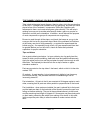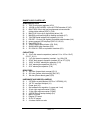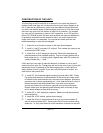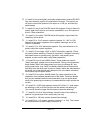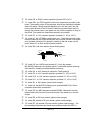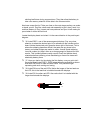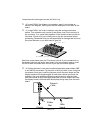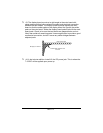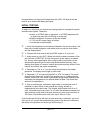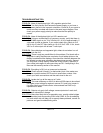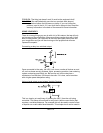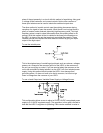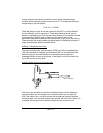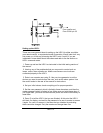
URC1 • 14
Congratulations you have just finished the entire URC1 kit! Now all that we
have to do is some initial testing and setup.
INITIAL TESTING:
To begin our initial tests, we need a few missing pieces to complete the whole
remote control system. These are:
❍ A radio, or a DTMF dialer or generator, or a DTMF telephone with
an audio tap (see hints on building an audio tap).
❍ Suitable connectors for power, audio and outputs.
❍ A 7-15 volt DC power supply or battery.
❍ A multimeter or oscilloscope.
1. Verify that all parts are mounted and soldered in the correct places, and
there are no solder bridges or cold solder joints on both the main board
and the display board.
2. Connect the audio source with the DTMF tones to J1 of your kit.
3. Apply power to your URC1. Make sure that the center connector of the
jack you use is POSITIVE. On first time power up the memory is cleared
out, and so are the passwords. Also a display test is performed, so the
entire display should light for about one second before blanking. If the
display never lights or is erratic, consult the trouble shooting section of this
manual and unhook the power immediately.
4. Generate an “* M” or a * 6 on the touch tone phone for the master
password. The display should light up with zeros.
5. Generate a “*0” for oper and then 087 or “0TS” for testing. This mode
sets all of your timers on, and all of the outputs vary so a change can be
noticed. Notice that if this mode is performed during normal operation the
memories are changed and not restored when finished. This mode also
sets all of the displays on.
6. Use an oscilloscope, multimeter, logic probe, or some other form of
indication to verify that all of the outputs are varying, as well as
independently from each other. The outputs should switch from 0 to +5
volts, the levels should vary from 0 to +5 volts, the resistance between the
wiper and low or high side of the pots should vary from near zero ohms to
10K ohms. The timers should vary from near 5 volts to 0 volts.
If you have made it this far with your kit and have had no problems, you’re all
set to go! If not, consult the troubleshooting guide in the manual to determine
the cause of the problem and how to go about solving it.



